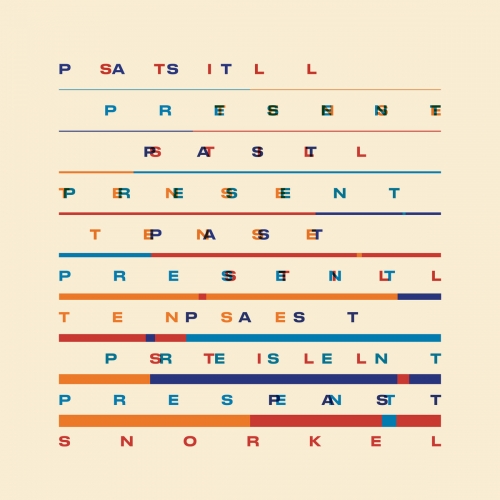VA - Sibelius: Great Performances (2015)

Artist: VA
Title: Sibelius: Great Performances
Year Of Release: 2015
Label: Decca
Genre: Classical
Quality: 320 / FLAC
Total Time: 12:18:54
Total Size: 1.65 / 2.32 GB
WebSite: Album Preview
Tracklist:Title: Sibelius: Great Performances
Year Of Release: 2015
Label: Decca
Genre: Classical
Quality: 320 / FLAC
Total Time: 12:18:54
Total Size: 1.65 / 2.32 GB
WebSite: Album Preview
Disc: 1
1. Karelia Overture, op.10
2. I Andante ma non troppo Allegro energico
3. II Andante (ma non troppo lento)
4. III Scherzo: Allegro
5. IV Finale (quasi una fantasia)
6. Symphony No.7 in C major, op.105
Disc: 2
1. I Allegretto Poco allegro Tranquillo, ma poco a poco ravvivando il tempo al allegro
2. II Tempo andante, ma rubato Andante sostenuto
3. III Vivacissimo Lento e suave Largamente
4. IV Finale: Allegro moderato
5. I Allegro molto moderato
6. II Allegretto moderato
7. III Poco vivace
8. IV Allegro molto
Disc: 3
1. I Allegro moderato
2. II Andantino con moto, quasi allegretto
3. III Moderato Allegro (ma non tanto)
4. Pohjola s Daughter, op.49
5. II Mélisande
6. VI Pastorale
7. VII Mélisande at the Spinning-wheel
8. VIII Entr acte
9. IX The Death of Mélisande
10. Night Ride and Sunrise, op.55
Disc: 4
1. I Tempo molto moderato, quasi adagio
2. II Allegro molto vivace
3. III Il tempo largo
4. IV Allegro
5. I Tempo molto moderato Largamente Allegro moderato
6. II Andante mosso, quasi allegretto
7. III Allegro molto
Disc: 5
1. I Lemminkäinen and the Maidens of the Island
2. II The Swan of Tuonela
3. III Lemminkäinen in Tuonela
4. IV Lemminkäinen's Return
5. I Intermezzo: Moderato
6. II Ballade: Tempo di menuetto
7. III Alla marcia: Moderato
Disc: 6
1. I Andante Allegro molto moderato
2. II Vivace
3. III Adagio di molto
4. IV Allegretto (ma pesante)
5. V Allegro
6. I Tempo molto moderato Largamente Allegro moderato
7. II Andante mosso, quasi allegretto
8. III Allegro molto
9. Finlandia, op.26 no.7
Disc: 7
1. En saga, op.9
2. Tapiola, op.112
3. Finlandia, op.26 no.7
4. Valse triste, op.44 no.1
5. I Allegro moderato
6. II Adagio di molto
7. III Allegro, ma non tanto
Disc: 8
1. Finlandia, op.26 no.7
2. Valse triste, op.44 no.1
3. The Swan of Tuonela, op.22 no.2
4. III Festivo: Tempo di Bolero
5. I Intermezzo: Moderato
6. II Ballade: Tempo di menuetto
7. III Alla marcia: Moderato
8. Tapiola, op.
Disc: 9
1. I Allegro moderato
2. II Adagio di molto
3. III Allegro, ma non tanto
4. Til kvällen (Illalle), op.17 no.6
5. Var det en dröm?, op.37 no.4
6. Höstkväll, op.38 no.1
7. Diamanten på marssnön, op.36 no.6
8. Flickan kom ifrån sin älsklings möte, op.37 no.5
9. Arioso, op.3
10. Våren flyktar hastigt, op.13 no.4
11. Se n har jag ej frågat rnera, op.17 no.1
12. Men min fågel märks dock icke, op.36 no.2
13. På verandan vid havet, op.38 no.2
14. Den första kyssen, op.37 no.1
15. Svarta rosor, op.36 no.1
16. Säv, säv, susa, op.36 no.4
17. Kom nu hit, död, op.60 no.1
Disc: 10
1. I Allegretto Poco allegro
2. II Tempo andante, ma rubato Andante sostenuto
3. III Vivacissimo Lento e suave Largamente
4. IV Finale: Allegro moderato
5. Var det en dröm?, op.37 no.4
6. Flickan kom ifrån sin älsklings möte, op.37 no.5
7. Svarta rosor, op.36 no.1
8. Säv, säv, susa, op.36 no.4
9. Diamanten på marssnön, op.36 no.6
10. Höstkväll, op.38 no.1
11. Våren flyktar hastigt, op.13 no.4
Disc: 11
1. I Tempo molto moderato Largamente Allegro moderato
2. II Andante mosso, quasi allegretto
3. III Allegro molto
4. I Intermezzo: Moderato
5. II Ballade: Tempo di menuetto
6. III Alla marcia: Moderato
7. IIa Élégie
8. IIb Musette
9. VIII Intermezzo
10. Valse triste, op.44 no.1
11. Finlandia, op.26 no.7
Sibelius thought in terms of orchestral sonorities, not in those of the smaller-scale keyboard. He used an existing vocabulary, but in so highly idiosyncratic a manner that no attempt to imitate it can succeed. Indeed, as Vaughan Williams put it in a ninetieth birthday BBC tribute that I remember hearing, he had the capacity to make a C major chord sound entirely new. Take, for example, the D minor-cum-modal cadence that ends the Sixth Symphony or the haunting B minor chords that end Tapiola. They sound like no other composer. In his constant renewal of his musical material, Sibelius almost prompts an astronomical analogy; that of continuous creation . Professor Gerald Abraham spoke of the first movement of the Third Symphony as comparable only with the greatest Viennese masters in its mastery of form. Indeed, it is his feeling for form and proportion that never fails to astonish. Yet what Sibelius has to say is intimately related to the atmosphere and sensibility of northern Europe just as, say, Mussorgsky relates to the Russian ethos. And in these deep roots in his native environment lies his strength.
When Sibelius was born in 1865, Finland was a provincial backwater of the Tsarist empire and his birthplace a garrison town for its army. There was no permanent symphony orchestra and no opera house. When he died ninety-one years later, Finland was an independent country on the threshold of prosperity after having been drawn into two world wars, its national identity closely defined by Sibelius s own achievements, with fine orchestras in Helsinki and Turku (Åbo) and the foundations laid for a flourishing opera. Sibelius had become widely celebrated and renowned, Finland s voice in the world. Among twentieth-century masters, the quietism of the Sixth Symphony or the profoundly searching anguish of Tapiola has no real parallel.
Robert Layton
When Sibelius was born in 1865, Finland was a provincial backwater of the Tsarist empire and his birthplace a garrison town for its army. There was no permanent symphony orchestra and no opera house. When he died ninety-one years later, Finland was an independent country on the threshold of prosperity after having been drawn into two world wars, its national identity closely defined by Sibelius s own achievements, with fine orchestras in Helsinki and Turku (Åbo) and the foundations laid for a flourishing opera. Sibelius had become widely celebrated and renowned, Finland s voice in the world. Among twentieth-century masters, the quietism of the Sixth Symphony or the profoundly searching anguish of Tapiola has no real parallel.
Robert Layton
or
or

![Noé Sécula - A Sphere Between Other Obsessions (2025) [Hi-Res] Noé Sécula - A Sphere Between Other Obsessions (2025) [Hi-Res]](https://www.dibpic.com/uploads/posts/2025-12/1766108017_sej880ryk23va_600.jpg)






